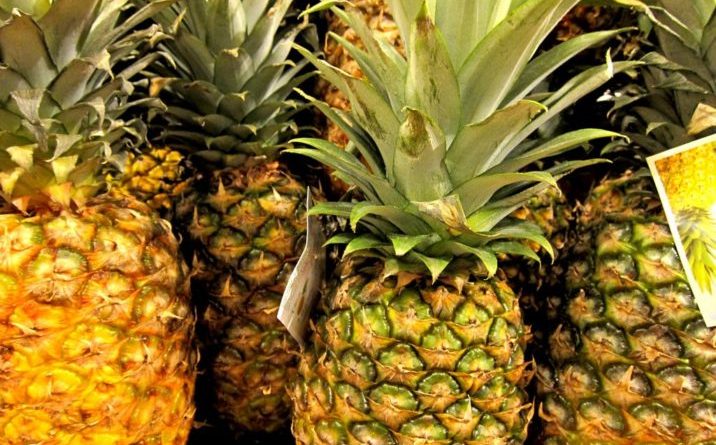Fabric of the Future
Photo By Alexander Acker/CC By-ND 2.0
Rachel Levine
Graduate Fellow
The textile production is a driving force for the survival of the global fashion industry. While fabric manufacturing has many positive qualities (especially for developing countries which use such industries as a main source of economic development), it is equally detrimental in terms of the greenhouse gas emissions it produces. Worldwide, 132 million metric tons of coal and up to 9 trillion gallons of water are required to produce yearly fabric yields [1]. In a global culture where many citizens are being newly lifted into the middle class, such buying power is a driver to increase the use of these valuable resources even more. However, Ananas Anam Ltd. (based in the UK and cultivated largely in the Philippines) has determined a clever way to produce environmentally responsible fabric from an unlikely source: pineapple shavings.
The agricultural production of pineapples yields biodegradable waste in the form of the inedible pineapple leaves and skins that are removed before eating. Rather than discarding these waste products, Ananas Anam has determined a way to utilize pineapple leaf fibers to produce a “non-woven textile” that is strong yet lightweight, appropriately named Piñatex [2],[3]. In doing so, a dual benefit is realized: not only is a main waste stream of the pineapple farming industry being upcycled and eliminated, but farmers (usually in less-developed nations) who produce the fruit in large quantities are able to sell the waste product for an additional profit, all without the use of additional water, fertilizer, or land area [3].
Piñatex has the appearance of leather, but its production yields far less greenhouse gas emissions. The popular shoe brand Timberland has determined that in order to produce a pair of it’s leather boots, nearly 200 pounds of carbon dioxide are emitted (mostly from the production of the leather alone). Comparatively, an average American emits 118 pounds of carbon dioxide per day [4]. By contrast, Piñatex is rated the sixth most sustainable fabric available on the mass market today, partially due to the fact that fruits generally produce an equivalent of 1.1kg of carbon dioxide emissions per kilogram of fruit (a low value compared to other common foodstuffs) and has been used to produce products from laptop bags, to shoes and outerwear [3],[5],[6].
Ananas Anam and its founder Dr.Carmen Hijosa have set a precedent in the fashion industry that has the potential to affect positive worldwide change. Fabric production techniques could be applied to other food waste products, yet more importantly, such products boost the desirability of ecofriendly options which shopping for clothes. The positive response Piñatex has received from consumers and the fashion industry alike could inspire similar innovations, revolutionizing textile production and dramatically reducing emissions, water usage, and wastes associated with fabric manufacturing.
References
[1] “Carbon Footprint of the Textile Industry.” ECOTEXTILES. May 25, 2009. Accessed May 19, 2016. https://oecotextiles.wordpress.com/2009/05/25/carbon-footprint-of-the-textile-industry/.
[2] “Ananas Anam – New Materials for a New World.” Ananas Anam. Accessed May 19, 2016. http://www.ananas-anam.com/.
[3] Herreria, Carla. “Pineapple Leather May Be The Sweet Future Of Fashion.” Huffington Post, May 03, 2016. http://www.huffingtonpost.com/entry/pineapple-leather-fashion-textile_us_5722fbdbe4b01a5ebde544a6.
[4] Ball, Jeffery. “Six Products, Six Carbon Footprints.” The Wall Street Journal, October 06, 2008. http://www.wsj.com/articles/SB122304950601802565.
[5] “Food’s Carbon Footprint.” Green Eatz. Accessed May 19, 2016. http://www.greeneatz.com/foods-carbon-footprint.html.
[6] Georgiagiff. “TOP 10: Sustainable Fabrics – Eko10.” Eko10. October 15, 2015. http://eko10.com/2015/10/top-10-sustainable-fabrics-2/.

